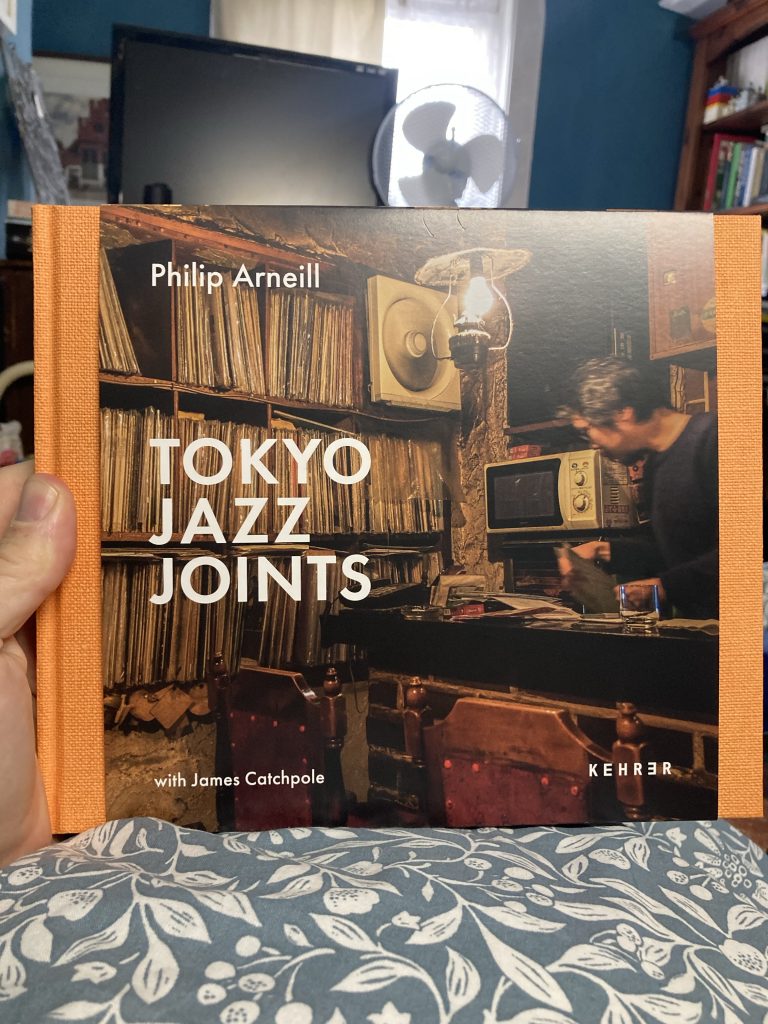


I’ve been rewarding myself for abstemious and healthy living recently. Each week I’m good, I’ve got a new CD. The first three of which were all, J-Jazz, or Japanese jazz.
I decided to round off this month’s good behaviour incentives scheme with this relatively new book, Tokyo Jazz Joints. A celebration of Jazz Kissa, in both words, and, most especially, in photographs.

As a hoarder and collector of stuff – books, music (mostly CDs now, and a remnant of a never huge vinyl collection), instruments, tools, models, etc. – the cluttered and cosily lit spaces that abound in this book are really something to chew over.

One of many bands I was in many moons ago, which started out as duo, became a trio, died, and was re-animated as a quintet, was focussed on and around jazz. And one of our originals was tentatively titled ‘At The Boho Cavern’, or some such silliness.

But the serious thing underlying the goofiness was a sense of cool foreign places just such as are lovingly documented and celebrated in this very handsome book.
We were probably thinking of America, back then. That these places to turn out to be a more real proposition in Japan, is a bit of a surprise, even to me with my growing awareness of the Japanese jazz scene.
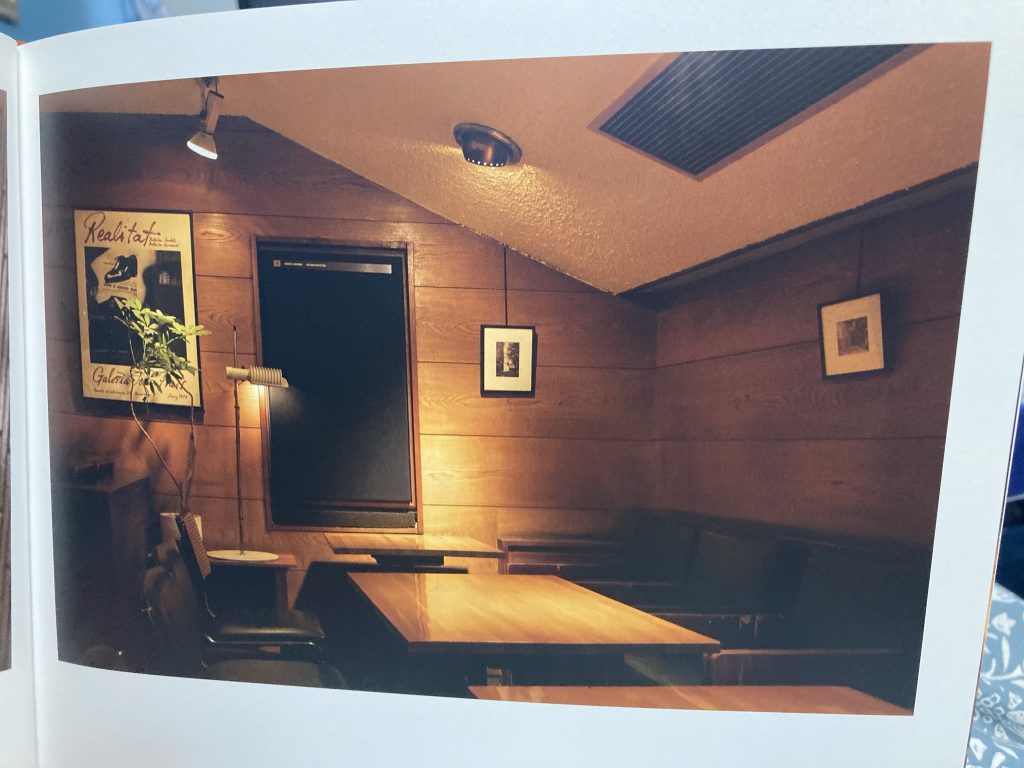
The interiors range from shabby to chic. One thing I found quite notable, was that most of them are nigh on empty. There are a few folk; the owner/bartender, the occasional punter. Only one or two pictures hint at a busy moment.
Was this an aesthetic choice? I often prefer to take pictures of buildings or places free of humans. It helps make these kissa more evocative, and open to one’s own subjective readings. Whatever, it’s still a little odd, given the human dimension of these places.
Perhaps it’s partly a reflection of the decline of this really rather lovely culture? If that’s the case – and the text says it is – that’s very sad.

The exteriors are as varied as the interiors, as I hope some of these pics of mine convey. Both the insides and the outsides also reflect the passing of time: patinated metals, fading flaking paints, wood textures, old pictures (postcards, posters, artwork, etc), and all kinds of ephemera; from tickets, magazines, programmes, to the vinyl (and CDs, evenVHS videos!), and the hand-written catalogues of artists/albums/tracks, etc.
There’s graffiti – from stuff scrawled by fans, and musos – to little philosophical nuggets, such as ‘Jazz and freedom go hand in hand, Monk’. And the names of the kissa, and their signage, are an aspect of the whole culture that could be a subject in itself.
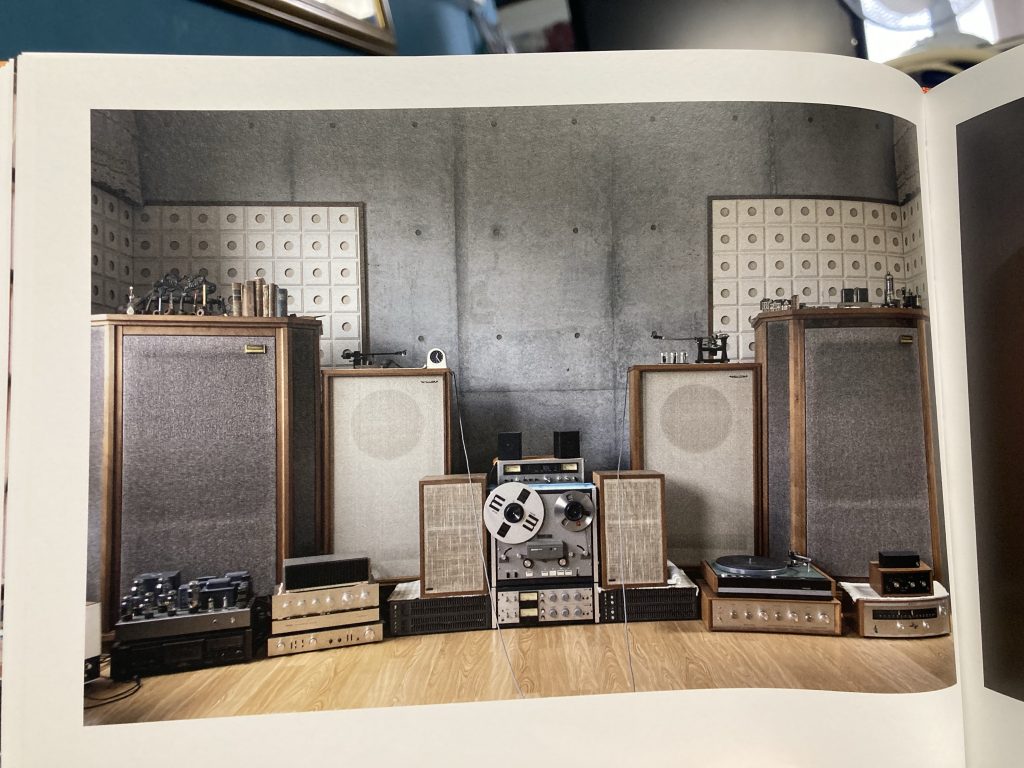
Much is made of the passion for hi-fi gear, in these joints. It’s also suggested (poss online rather than in this book; the related website is well worth checking out), that a good deal of this tech is custom built.
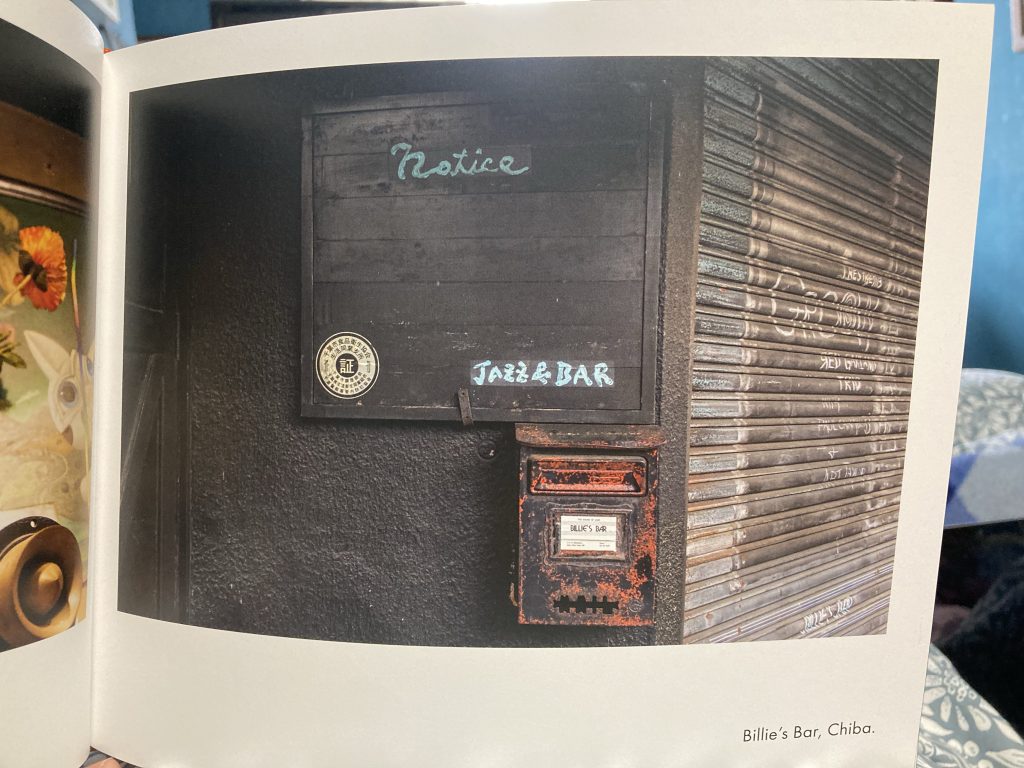

My dad built amps and speakers at one point, many years ago. Seeing some of these images, such as the one above (a close up detail of a much larger picture), makes me want to try my hand at building some high end listening tech. I love that blue amp! And there are lots of little valve units dotted throughout.

I can only imagine the joy of finding places like these in the flesh. How come Japan has so many? Even now when Jazz Kissa culture is in decline? Whilst here in the UK we have – as far as I know? – nothing at all equivalent.
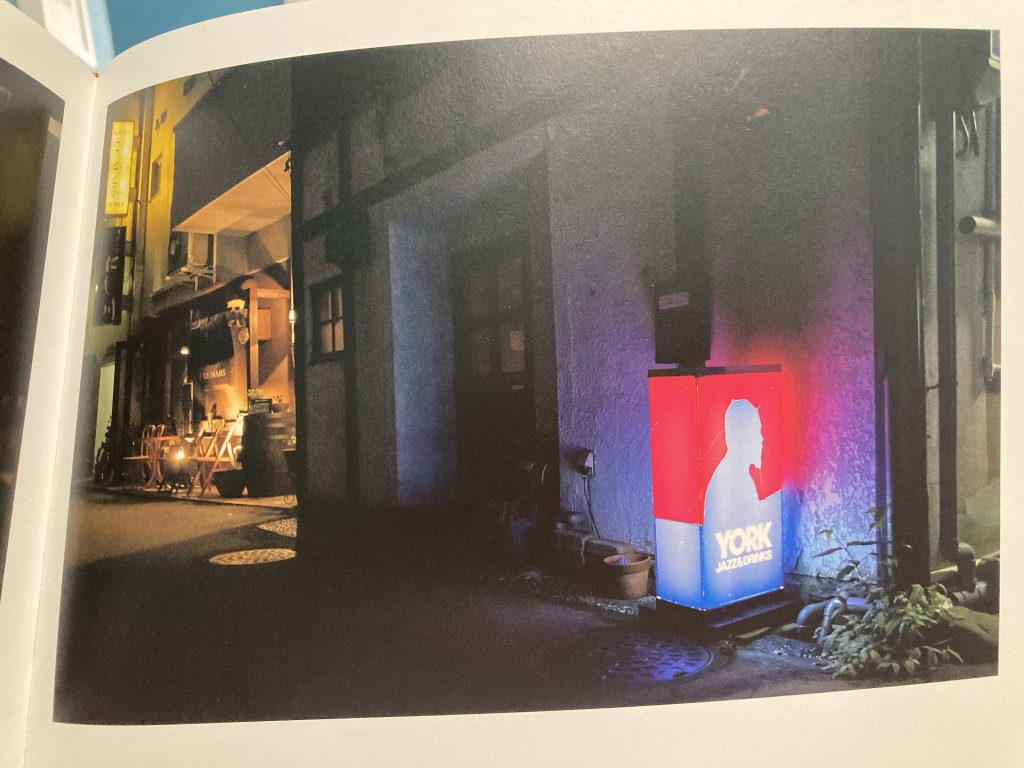
The choice to photograph everything in the ‘natural light’ of the settings, as experienced, i.e. without flash, etc, is fundamentally important. It’s what gives all these terrific images their incredibly powerful cosiness. Powerful cosiness, eh? Sounds perfect to me!

And this final image, also the final pic in this sublime book, captures that essence of connoisseurship, the reverie! I need to build a little space into our home inspired by these fabulous jazz kissa.
What a terrific book! Thanks to Philip Arneill, James Catchpole, Kehrer, et al – and the jazz kissa dudes themselves – for a feast of inspirational words and images. A real treasure of a book.
‘There is still much work to be done. There are many joints to visit, photos to make, stories to uncover and memories to create, before those photos and stories are all that is left of this magical, fading world.’ Philip Arneill
* Or indeed any aesthete type life.
